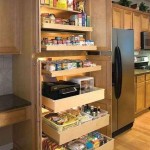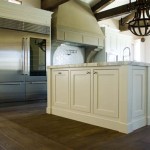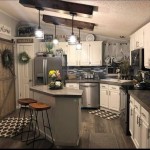Hole Size for Kitchen Faucet
Choosing the right kitchen faucet involves several considerations, and one of the most crucial is determining the appropriate hole size in the sink or countertop. An incorrect hole size can lead to installation difficulties, leaks, and an aesthetically unpleasing final result. Understanding the standard hole sizes and how they correlate with different faucet types is essential for a successful kitchen renovation or upgrade.
Standard Hole Sizes for Kitchen Faucets
Kitchen faucets are designed to fit specific hole configurations in sinks and countertops. While variations exist, some standard sizes are prevalent in the industry. These sizes are typically expressed in diameter and measured in inches.
The most common hole size is 1 3/8 inches, often used for single-handle faucets. These faucets typically have a single lever that controls both water flow and temperature. This size hole is also frequently used for faucets with separate handles for hot and cold water, where the handles and spout are mounted individually but close together.
Faucets with a separate sprayer often require an additional hole for the sprayer base. In these setups, the main faucet body utilizes the standard 1 3/8-inch hole, while the sprayer base requires an additional 1/2-inch to 1 3/8-inch hole, depending on the specific model. This results in a total of two or sometimes three holes in the sink deck.
Larger, more elaborate faucets, such as those with built-in soap dispensers, instant hot water dispensers, or water filtration systems, may need three or four holes. These configurations often include a main faucet hole of 1 3/8 inches and additional smaller holes for each accessory. These hole sizes and spacing should be carefully measured and matched to the faucet's specifications.
Measuring Existing Hole Size
If replacing an existing faucet, measuring the current hole size is crucial. This can be done using a ruler or tape measure. Measure the diameter of each hole, ensuring accuracy to prevent issues during installation. It's advisable to measure from the underside of the sink or countertop for the most precise measurement.
Dealing with Non-Standard Hole Sizes
Occasionally, sinks or countertops might have non-standard hole sizes or configurations. In such situations, a few options are available. If the existing holes are smaller than required, they can sometimes be carefully enlarged using appropriate tools. However, this requires careful planning and execution to avoid damaging the sink or countertop. If the holes are larger or in undesirable locations, a deck plate can often be used to cover them. Deck plates are available in different finishes and configurations to match the faucet and sink aesthetics. In more complex cases, professional assistance may be required to modify the sink or countertop or to select a compatible faucet.
Choosing the Right Faucet Based on Hole Size
When selecting a new kitchen faucet, consider the existing hole configuration or the desired layout. A single-hole faucet is a good choice for sinks with only one pre-drilled hole or for minimalist designs. Faucets with separate sprayers or additional features necessitate multiple holes. Ensure the chosen faucet's specifications match the existing or planned hole configuration to avoid compatibility issues during installation.
Importance of Accurate Measurement
Accurate measurement is paramount to a successful faucet installation. Even slight discrepancies can lead to difficulties in securing the faucet or create gaps that can lead to leaks. Double-checking measurements and verifying the faucet specifications are highly recommended.
Consulting Manufacturer Specifications
Manufacturers provide detailed specifications for their faucets, including the required hole size and configuration. Consulting these specifications is essential before purchasing a faucet. This information can typically be found on the product packaging, the manufacturer's website, or in installation manuals.
Understanding hole size requirements is a crucial aspect of choosing and installing a kitchen faucet. Careful planning and accurate measurements contribute significantly to a successful installation and a functional, aesthetically pleasing kitchen sink area.

Faucet Hole Sizes For Kitchen And Bathroom Xiamen Olt
What Size Hole Does The Faucet Need

Viga Shows You Know What Is The Standard Faucet Hole Size In Kitchen And Bathroom Manufacturer

Bwe 10 In Kitchen Faucet Sink Hole Cover Deck Plate Escutcheon For 1 Or 3 Brass Brushed Nickel P 33 N The Home

Bwe 10 2 In X 3 1 34 Brass Kitchen Sink Faucet Hole Cover Deck Plate Escutcheon Matte Black P 11 The Home

Bwe 10 2 In X 5 1 34 Brass Kitchen Sink Faucet Hole Cover Deck Plate Escutcheon Polished Chrome P 22

The Ultimate Guide To Hole Saw Sizes For Kitchen Faucets Forious Store

Pull Down Kitchen Faucet 1l Recertified In Spotshield Stainless 19824lf Sp R Delta

Kraus Stainless Steel Deck Plate For Kitchen Faucet In Brushed Gold Dp02bg The Home

Iviga 3 Hole 8 In Double Handle Brass Bridge Kitchen Faucet With Mode Pull Down Sprayer And Supply Lines Brushed Nickel Vsk47








